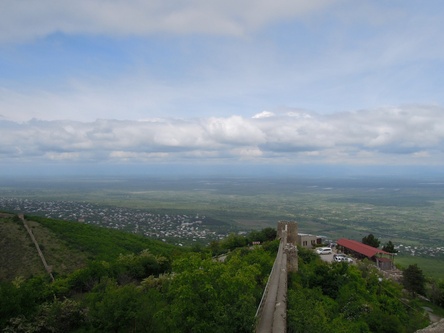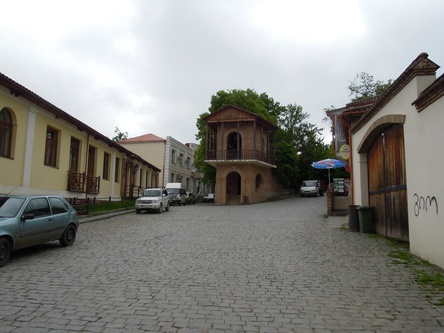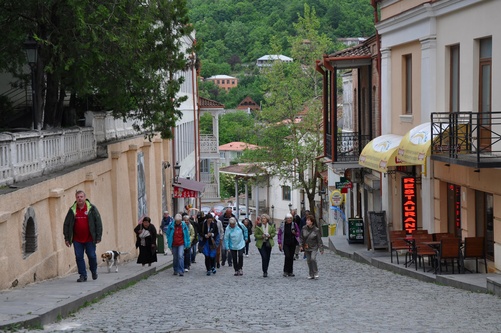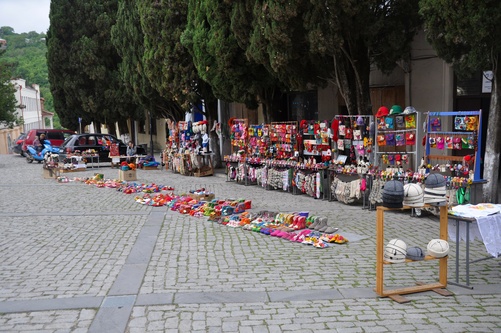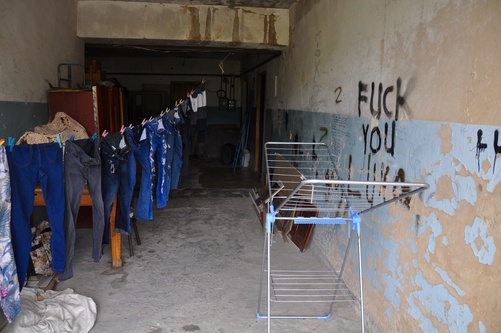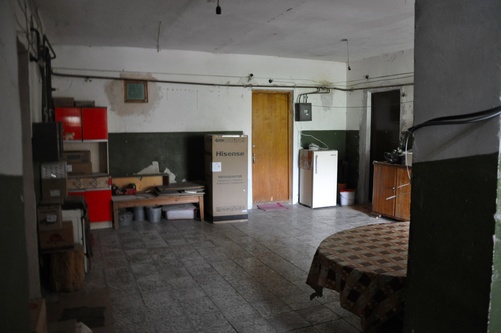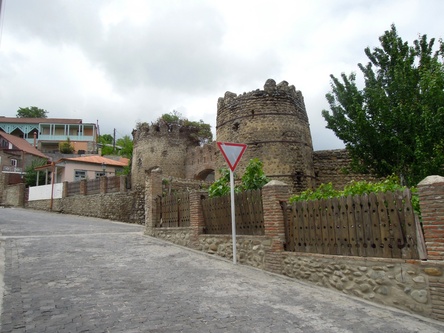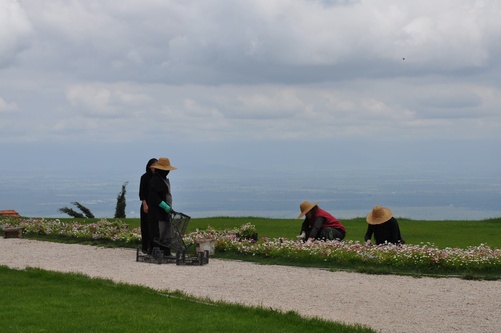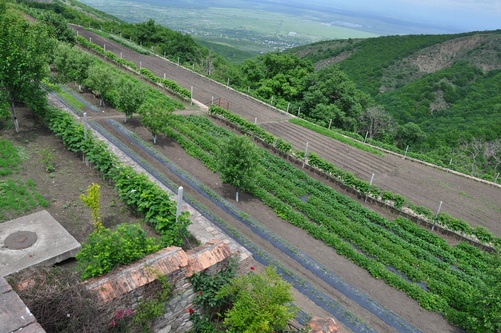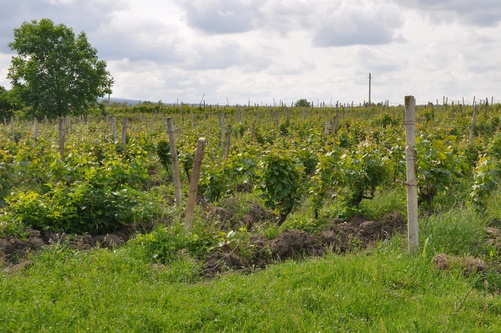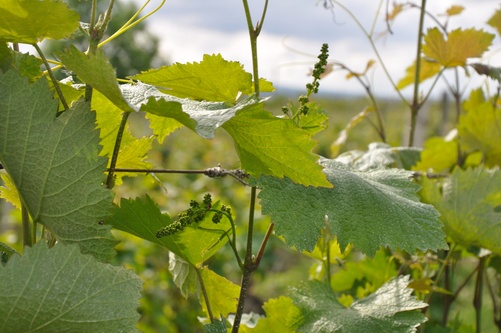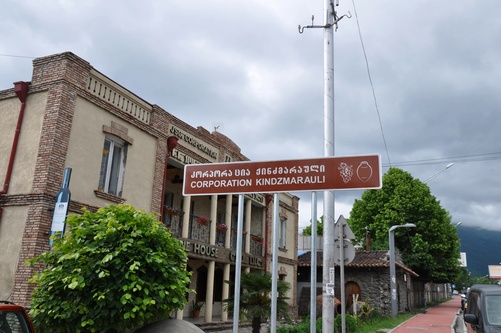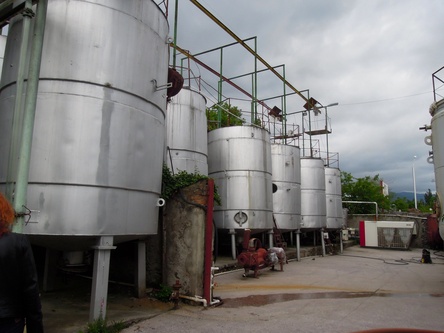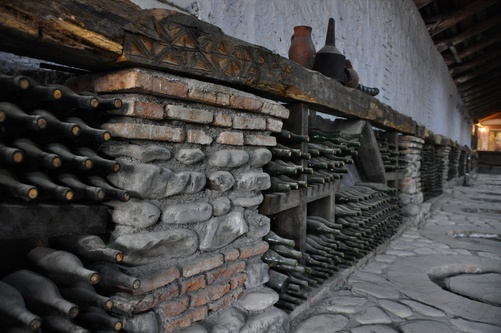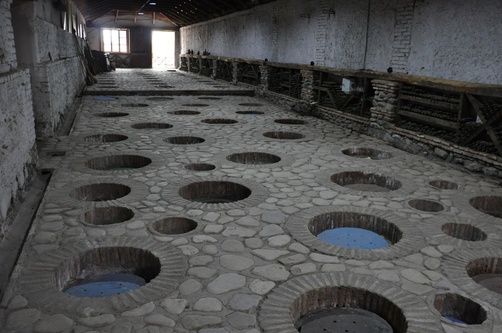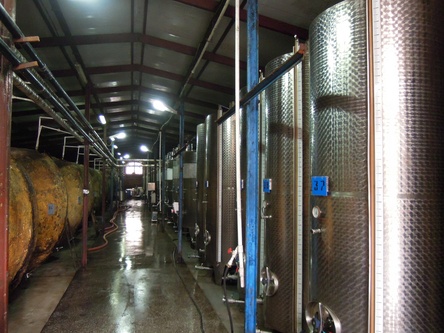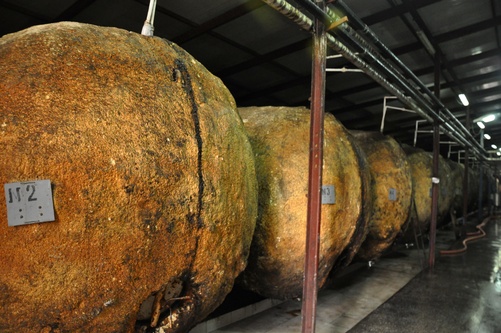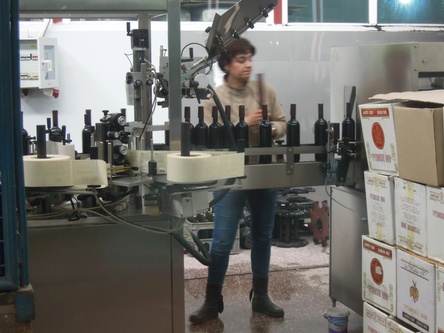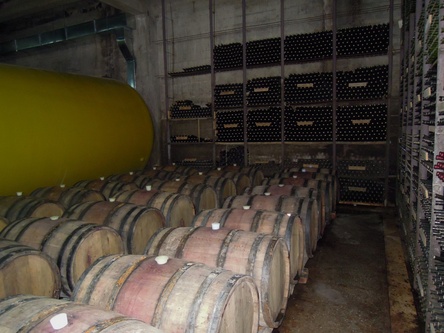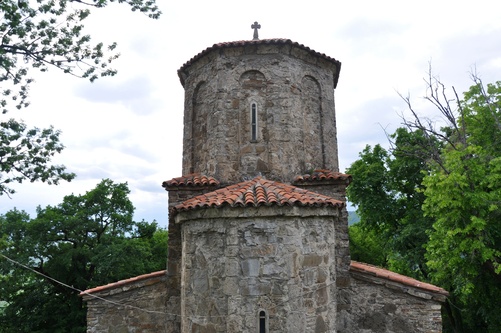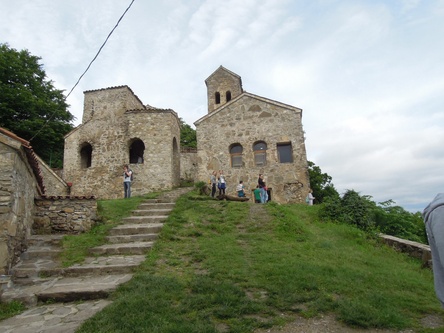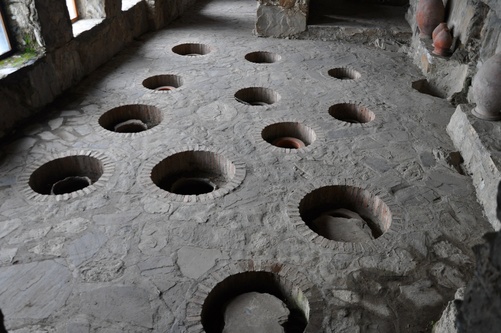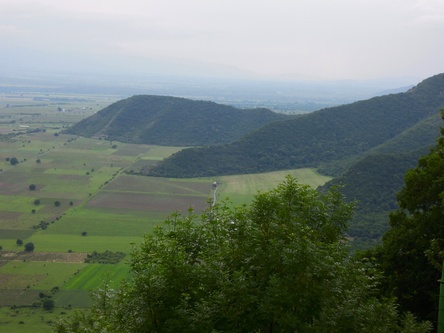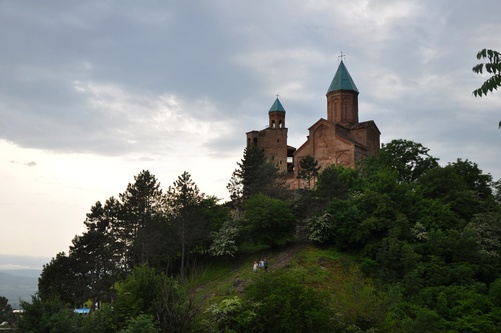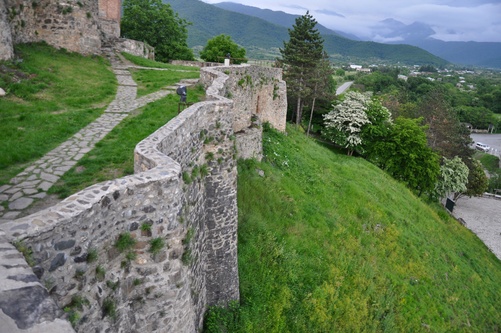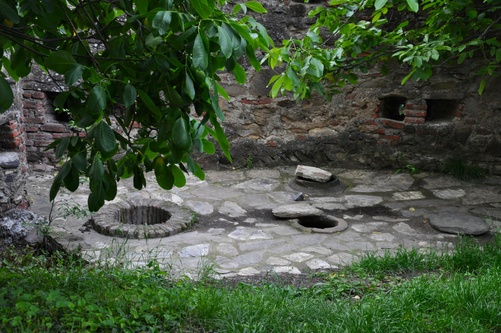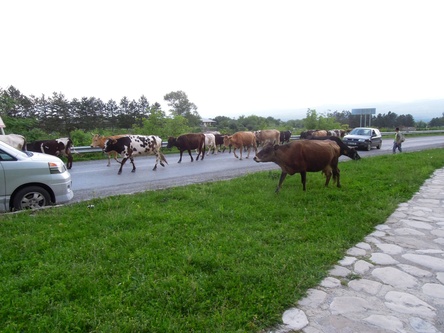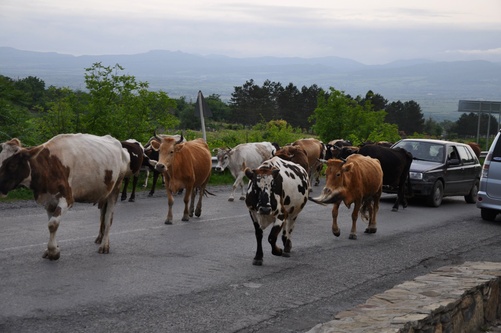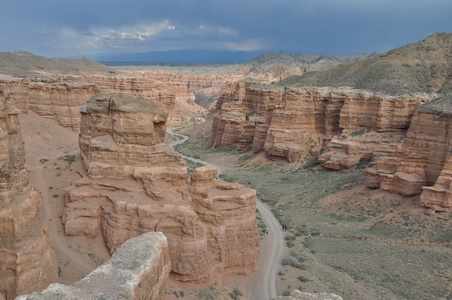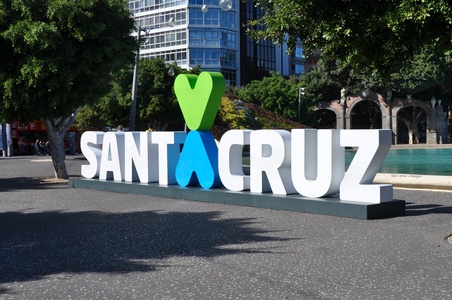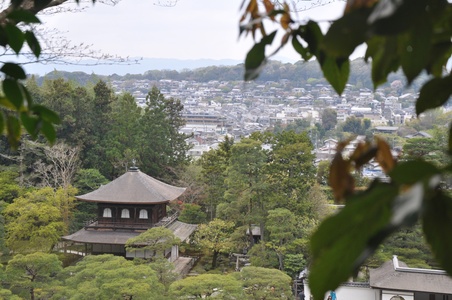Kakheti 18.05.2017
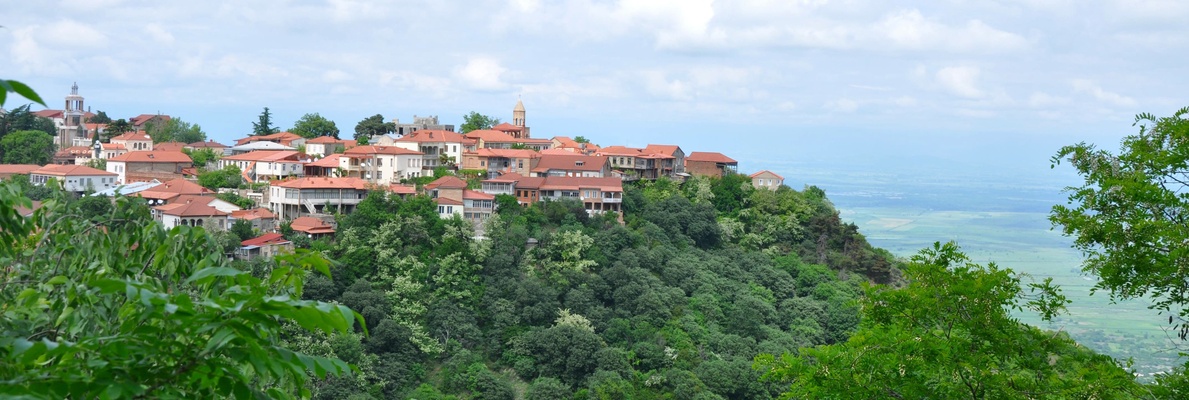
Our Kakhetian journey has started with visitingDavid Gareja monastery and continued with Sighnaghi. This extremely popular among tourists town is located on the hill just above the Alazan valley.
The town seems neat and cosy on the surface.
There are many tourists wandering about in the streets. Surprisingly there are many Germans and other non ex-USSR foreigners among them.
But deeper look reveals poor condition of what is hidden behind pretty façades. There are many abandoned and decrepit houses. Here's what common staircase in our house looked like:
Old town is surrounded by the stone wall with towers.
There is a Bodbe Convent situated 2 kilometres away from Singhaghi with Saint Nino buried inside.
Local nuns are occupied with rural activities. They harvest strawberries and host cattle.
Kakheti - is the main wine producing region in Georgia. The most famous wines are produced here. Therefore any road is surrounded by vineyards.
Wineries here organize tours to present their production. We did not miss a chance and visited Kinzmarauli Corporation - main wine producer in Georgia. 10 acres of vineyard yield 750 litres of wine per year.
Wine is produced according to two technologies: Eropean and Kakhetian. By European technology only grape juice (with rind for red wine) is used for production. By Kakhetian, grapes and branches are used as well. This substance is yeast in underground ceramic jars. One jar contains up to 3000 litres of wine.
According to European technology wine is produced in huge cisterns.
Visitors are allowed to see laboratory and bottling line. Please note, that the line is not fully automatized and still hand-labour is required.
There is a wine storage under bottling line. Not only wine for sell is stored here, but also special orders and collection wine. Customers can rent their own bottle storage for 10 GEL (4 EUR) per year only.
There is Nekresi Monastery located near Kinzmarauli factory. One can get there by foot (1.2 kilometres up along the steep road) or by bus (2 GEL).
Kakhetians monks also produced wine, like many other Kakhetians did. Vessel on the photo was used for wines squeezing with bare feet,
From the height of monastery it is clearly seen how Alazan valley is turned into hills.
A bit further there is Gremi town, the former Kakheti capital. In XVII it was moved to Telavi and there is only royal palace and Church of Archangels worth to visit nowadays.
Stock raising is developed rather good in Kakheti, however people suffer from it sometimes: cows walk right on the road quite often and it's really hard to pass by them. Though it's not all from Kakheti, to be continued...

